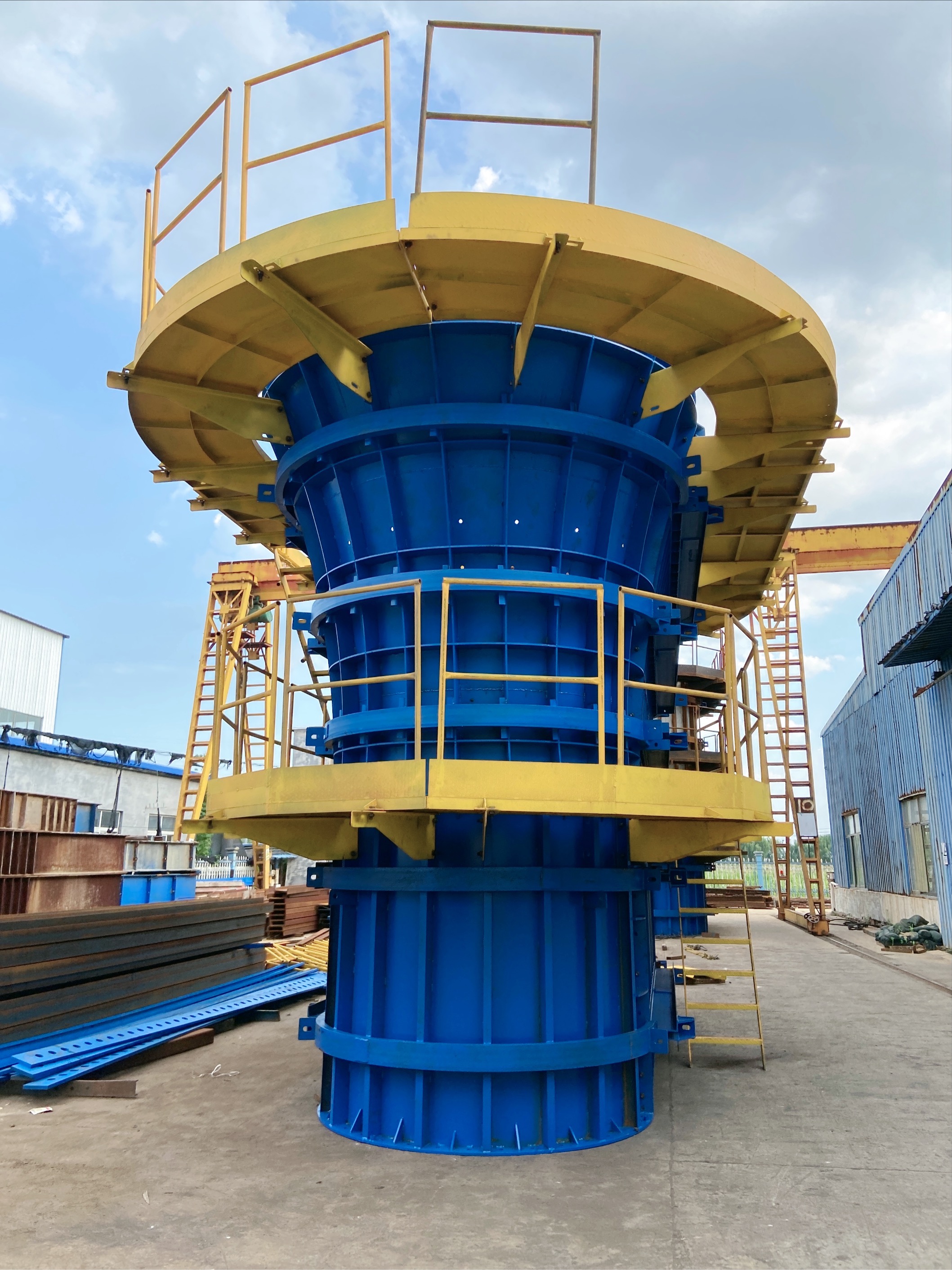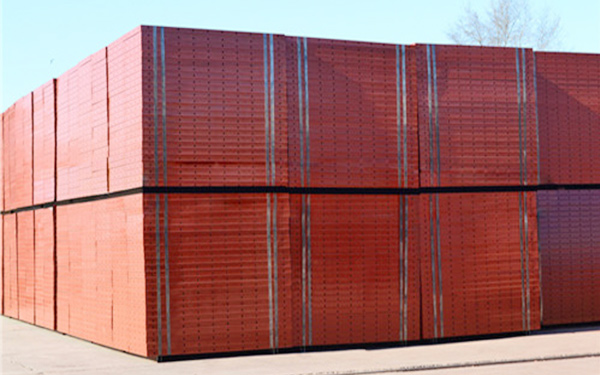Current position:
Home
News home
Industry News
Renting Steel Formwork Rental Station: How to Determine the Material and Density of Steel Formwork?
Renting Steel Formwork Rental Station: How to Determine the Material and Density of Steel Formwork?
source:Shandong Tianhong Heavy Industry Co., Ltd
Abstract:
The determination of steel formwork material and density requires a combination of physical testing and engineering application parameters. The following is a systematic judgment method:
1、 Material identification method
Chemical composition analysis
Use a spectrometer to detect the content of carbon (C), manganese (Mn), silicon (Si) and other elements:
Q235 steel has a carbon content of 0.14-0.22%, Q345 steel has a carbon content of ≤ 0.20%, and manganese content is 1.00-1.60%
Stainless steel (such as 304) needs to be tested for chromium (Cr ≥ 18%) and nickel (Ni ≥ 8%) content
Laboratory commonly used electron probe X-ray microscopy analysis with an accuracy of 0.01%
Physical performance testing
Hardness test: Q235 hardness HRC ≤ 22, Q345 can reach HRC40-55 after heat treatment, stainless steel 304 hardness HRC ≤ 30
Impact test: Q345E needs to pass a -40 ℃ low-temperature impact test to determine material toughness based on fracture morphology
Appearance discrimination method
Q235 has a red oxide layer after natural cooling, while Q345 has a black surface after rapid cooling process
Poor quality steel often has folding cracks or rough surface defects, and poor material uniformity
Label verification
The factory label of regular steel formwork shall indicate the standard number and yield strength value of GB/T 700 (Q235) or GB/T 1591 (Q345)
2、 Density determination method
||Method Type | Operation Points | Applicable Scenarios|
|-|-|-|
|Measurement method | Mass/volume method | ① Accurate weighing (error ≤ 0.1kg)
② Measuring the volume of irregular parts using the water level method | Irregular templates or special alloy steel|
|Table lookup method | Material matching | Q235 density 7.85g/cm ³, Q345 density 7.87-7.91g/cm ³, stainless steel 304 density 7.93g/cm ³ | Standard specification template|
Example calculation:
A Q235 steel formwork is 2m long, 1m wide, and 8mm thick, with a weight of 2 × 1 × 0.008 × 7850=125.6kg. When the measured weight is 128kg, the error is 1.9%. It is necessary to check whether the material is doped
3、 Application scenario adaptation
Bridge engineering: Q345 (density 7.91g/cm ³) is preferred, with a yield strength of 345MPa, which is 47% higher than Q235
Civil building: Q235 (density 7.85g/cm ³) meets conventional loads and has a cost reduction of 15-20%
Food equipment: Stainless steel 304 must comply with GB 4806.9 migration test standard, with a density corrected to 7.93g/cm ³
Attention:
Material determination requires a combination of chemical, physical, and visual methods, with a single detection error of up to 30%
The density calculation should be combined with the national standard thickness tolerance (± 0.25mm), and the weight error should be controlled within ± 2%
Important projects require a third-party testing agency to issue a CMA certification report
Chemical composition analysis
Use a spectrometer to detect the content of carbon (C), manganese (Mn), silicon (Si) and other elements:
Q235 steel has a carbon content of 0.14-0.22%, Q345 steel has a carbon content of ≤ 0.20%, and manganese content is 1.00-1.60%
Stainless steel (such as 304) needs to be tested for chromium (Cr ≥ 18%) and nickel (Ni ≥ 8%) content
Laboratory commonly used electron probe X-ray microscopy analysis with an accuracy of 0.01%
Physical performance testing
Hardness test: Q235 hardness HRC ≤ 22, Q345 can reach HRC40-55 after heat treatment, stainless steel 304 hardness HRC ≤ 30
Impact test: Q345E needs to pass a -40 ℃ low-temperature impact test to determine material toughness based on fracture morphology
Appearance discrimination method
Q235 has a red oxide layer after natural cooling, while Q345 has a black surface after rapid cooling process
Poor quality steel often has folding cracks or rough surface defects, and poor material uniformity
Label verification
The factory label of regular steel formwork shall indicate the standard number and yield strength value of GB/T 700 (Q235) or GB/T 1591 (Q345)
2、 Density determination method
||Method Type | Operation Points | Applicable Scenarios|
|-|-|-|
|Measurement method | Mass/volume method | ① Accurate weighing (error ≤ 0.1kg)
② Measuring the volume of irregular parts using the water level method | Irregular templates or special alloy steel|
|Table lookup method | Material matching | Q235 density 7.85g/cm ³, Q345 density 7.87-7.91g/cm ³, stainless steel 304 density 7.93g/cm ³ | Standard specification template|
Example calculation:
A Q235 steel formwork is 2m long, 1m wide, and 8mm thick, with a weight of 2 × 1 × 0.008 × 7850=125.6kg. When the measured weight is 128kg, the error is 1.9%. It is necessary to check whether the material is doped
3、 Application scenario adaptation
Bridge engineering: Q345 (density 7.91g/cm ³) is preferred, with a yield strength of 345MPa, which is 47% higher than Q235
Civil building: Q235 (density 7.85g/cm ³) meets conventional loads and has a cost reduction of 15-20%
Food equipment: Stainless steel 304 must comply with GB 4806.9 migration test standard, with a density corrected to 7.93g/cm ³
Attention:
Material determination requires a combination of chemical, physical, and visual methods, with a single detection error of up to 30%
The density calculation should be combined with the national standard thickness tolerance (± 0.25mm), and the weight error should be controlled within ± 2%
Important projects require a third-party testing agency to issue a CMA certification report
Disclaimer: The content provided on this website is for reference only (some information is sourced from the internet). The publication of content information is for the purpose of transmission and does not represent the views of this website. If the content involves copyright issues, please contact the website editor in a timely manner, and we will take appropriate measures to avoid unnecessary losses for both parties.
Related article
- Steel template manufacturers, wholesalers, and suppliers: What should be done if there are scratches on the surface of the template?
- How to calculate the bearing capacity of steel formwork for rental manufacturers of construction steel formwork?
- Customized specifications for steel formwork: What factors need to be considered in calculating the weight of steel formwork?
- Customized steel formwork manufacturers: How to avoid leakage of grout at the joints of the formwork?
- Renting steel formwork manufacturers: How much does the material of steel formwork affect the price?
- Composite steel formwork manufacturer supply: How to calculate the area of steel formwork?
- Rental price of steel formwork: Analysis of key points for concrete construction of bridge special-shaped column formwork
- Renting steel formwork: What is the price of steel formwork?
- Steel template manufacturers supply for rent: How to deal with steel template size accuracy that is not up to standard? 双语对照 笔记
- Composite bridge steel formwork processing manufacturer: How to check the dimensional accuracy after steel formwork correction?
- Pulling out Mountains and Rivers for Win Win - Jining Tianli Employees Celebrate National Day Holiday with Tug of War Competition
- Pulling out Mountains and Rivers for Win Win - Jining Tianli Employees Celebrate National Day Holiday with Tug of War Competition
Hot article

- T梁模版
- Pulling out Mountains and Rivers for Win Win - Jining Tianli Employees Celebrate National Day Holiday with Tug of War Competition
- 力“拔”山兮,“河”作共赢——济宁天力员工欢度国庆假期之拔河比赛
- Pulling out Mountains and Rivers for Win Win - Jining Tianli Employees Celebrate National Day Holiday with Tug of War Competition
- Pulling out Mountains and Rivers for Win Win - Jining Tianli Employees Celebrate National Day Holiday with Tug of War Competition
- Pulling out Mountains and Rivers for Win Win - Jining Tianli Employees Celebrate National Day Holiday with Tug of War Competition
- Pulling out Mountains and Rivers for Win Win - Jining Tianli Employees Celebrate National Day Holiday with Tug of War Competition
Recommended article

Customized rental of construction steel formwork: How to prevent and deal with loose joints in steel formwork?

Customized rental of steel formwork: What are the dimensions, specifications, and models of steel formwork?
- Customized rental of construction steel formwork: How to prevent and deal with loose joints in steel formwork?
- Customized rental of steel formwork: What are the dimensions, specifications, and models of steel formwork?
- Steel formwork manufacturer supply specifications: What are the applicable fields for steel formwork
- 力“拔”山兮,“河”作共赢——济宁天力员工欢度国庆假期之拔河比赛
- Pulling out Mountains and Rivers for Win Win - Jining Tianli Employees Celebrate National Day Holiday with Tug of War Competition
- Pulling out Mountains and Rivers for Win Win - Jining Tianli Employees Celebrate National Day Holiday with Tug of War Competition
- Pulling out Mountains and Rivers for Win Win - Jining Tianli Employees Celebrate National Day Holiday with Tug of War Competition
- Pulling out Mountains and Rivers for Win Win - Jining Tianli Employees Celebrate National Day Holiday with Tug of War Competition



